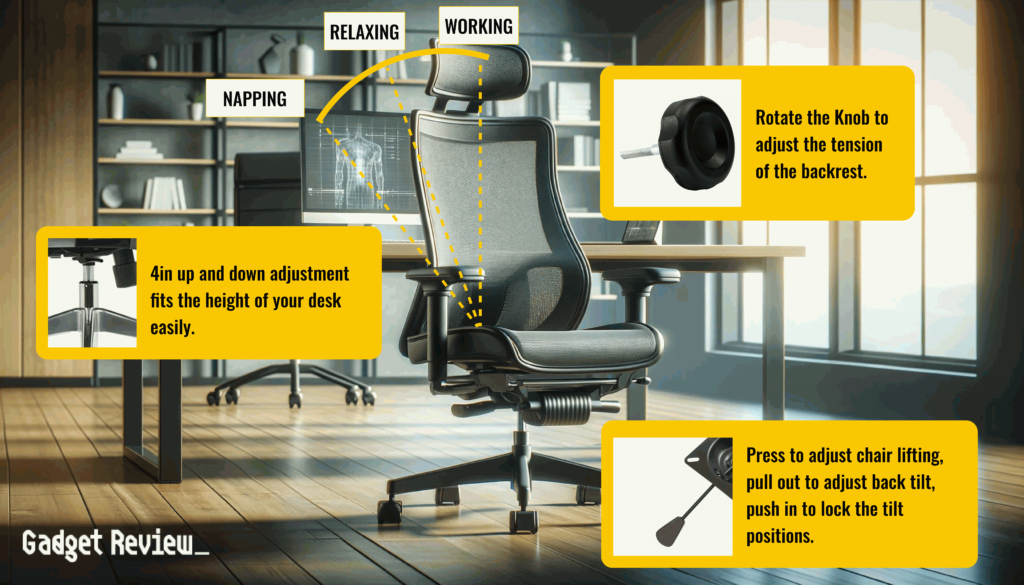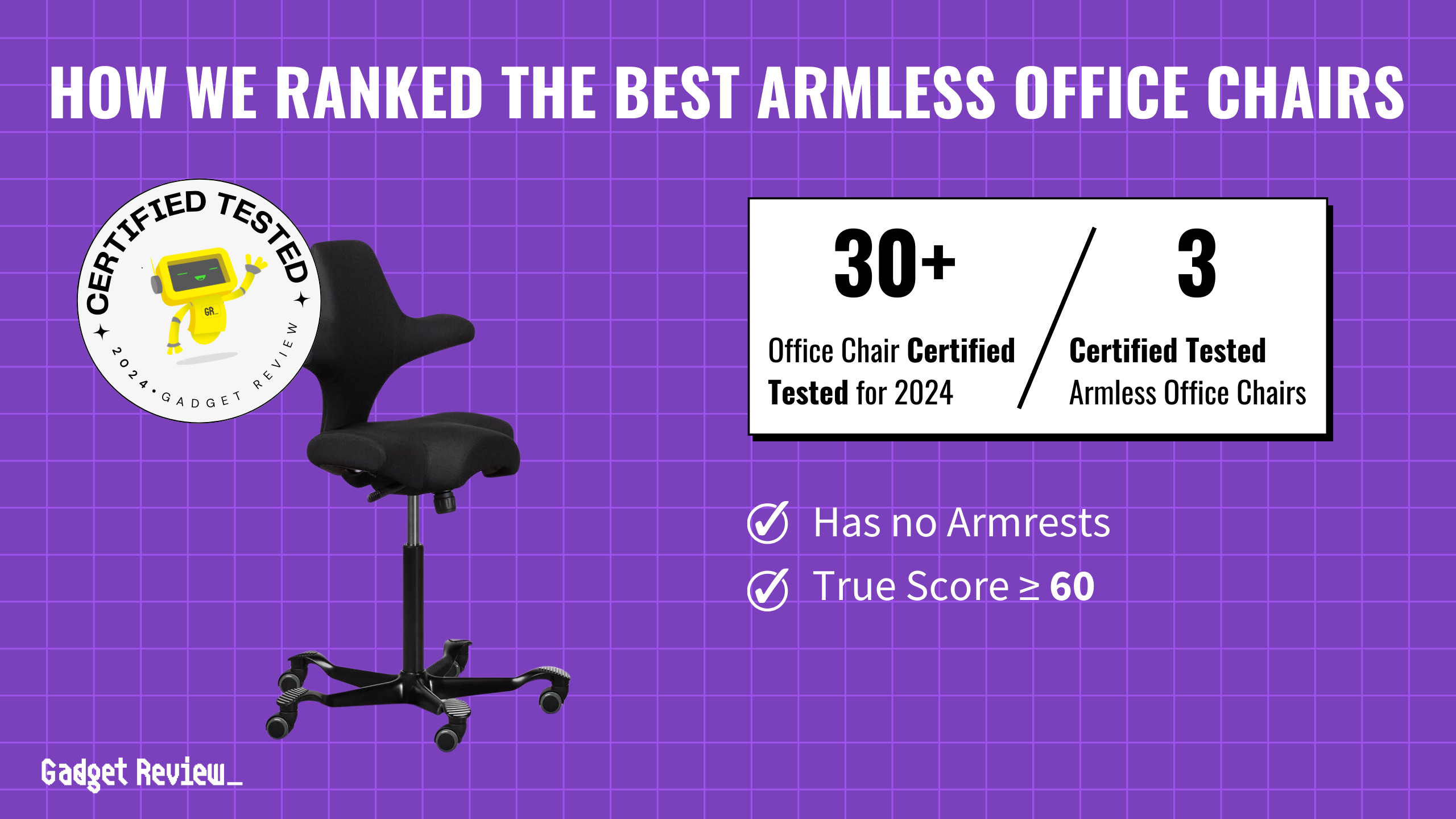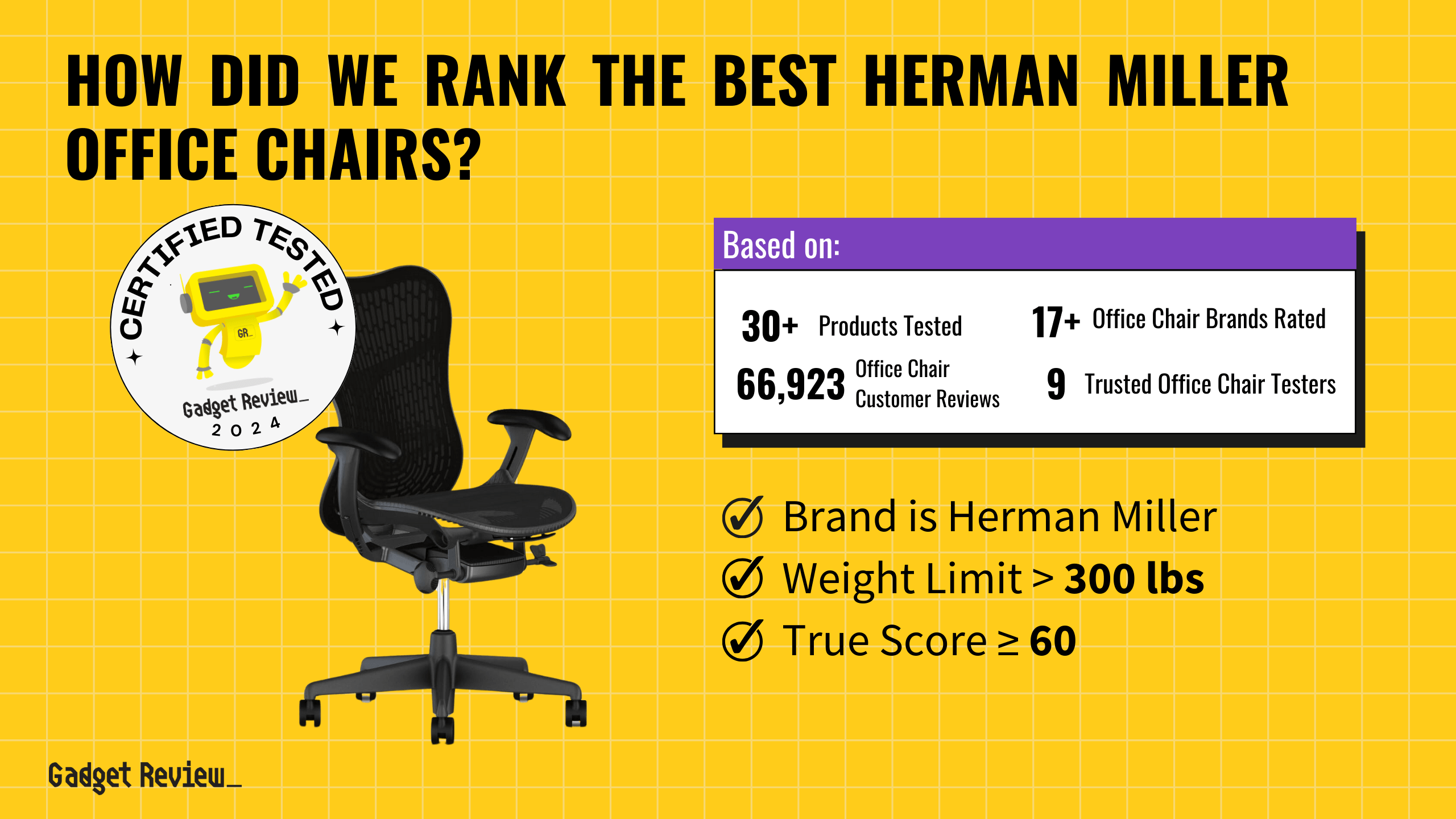Sliding out of an office chair can be uncomfortable and damaging to your spine, especially if it happens frequently.
We have answers as to why this happens and how to resolve it. Let’s dive in.
Prevent Sliding Out of Your Office Chair

To stop sliding out of an office chair without buying a new one, you can try the following steps:
1 Adjust the Seat Depth
Ensure the seat depth is appropriate. When sitting back, there should be a small space (about the width of a fist) between the back of your knees and the edge of the seat. If the seat is too deep, you’re more likely to slide.
2 Recline the Backrest
Adjust the backrest so it’s slightly reclined. This position can help prevent you from sliding forward.
3 Use a Non-Slip Cushion
Place a non-slip cushion or a seat pad on the chair. This can provide more grip and prevent sliding.
4 Check the Chair’s Surface
If the chair’s surface is too smooth, consider covering it with a more textured fabric.
5 Adjust the Chair Height
Make sure your feet are flat on the floor or on a footrest. If your feet dangle, you’re more likely to slide.
6 Maintain Good Posture
Sit back in the chair with your back against the backrest. Good posture can help prevent sliding.
If none of these adjustments help, it might be time to consider a new office chair with better ergonomic features suited to your body.
For more about sliding in your chair, the video below offers suggestions and health problems with chair sliding.
Sliding In Your Office Chair And Its Harms
Learn the dangers and reasons why you slide in your office chair:
The Importance of Seat Depth
It’s the distance from the back to the front of your chair. Proper seat depth prevents you from sliding and ensures your legs are comfortable.
Here’s a simple test: sit back in your chair and place a fist between the chair’s edge and your calf.
If it fits, your chair has a good depth. If not, it’s time to adjust.
Practical Adjustments to Stop Sliding Out of Your Chair

Backrest Adjustments
- Often overlooked, the backrest can be key to achieving the right seat depth.
- Adjust it forward or backward to find the right balance for your posture.
Using Cushions or Pillows
- If adjusting the backrest isn’t enough, a cushion or pillow can help.
- It’s a straightforward solution to modify the seat depth and enhance back support.
Considering a New Chair
- Sometimes, the best solution is to invest in a new chair.
- Prioritize trying out different models for their comfort and adjustability as you shop for a new chair.
Spotlight on Ergonomic Design

Ergonomic design is essential in a quality office chair, particularly for prolonged sitting. It supports the spine’s natural shape, evenly distributes weight, and minimizes back and hip strain.
This design is key to preventing sliding, as ergonomic chairs often have contoured seats and adjustable features that ensure a stable seating position.
The use of textured materials also adds grip, reducing the likelihood of sliding.
Selecting the right office chair is more than a matter of comfort; it’s about maintaining good posture and health over long work hours.
Whether you’re making adjustments to your current chair or considering a new one, focus on ergonomic features that support your spine and posture.





















